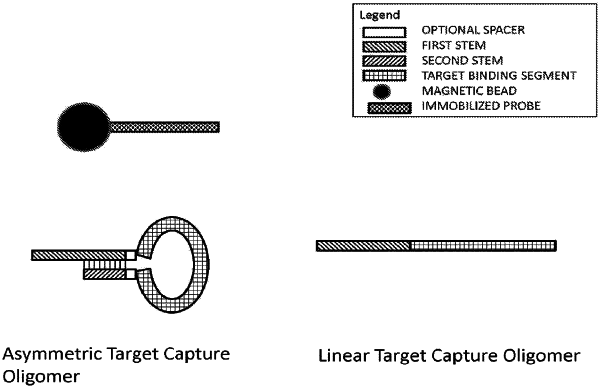| CPC C12Q 1/6834 (2013.01) [C12Q 1/6816 (2013.01)] | 7 Claims |

|
1. A target capture oligomer comprising a first stem segment and a second stem segment comprising complementary segments of polyA and polyT differing in length by at least five nucleobases flanking a target-binding segment complementary to a target nucleic acid, wherein under hybridizing conditions:
in the absence of the target nucleic acid, the target capture oligomer forms a stem-loop structure such that, in the stem-loop structure, intramolecular hybridization of the first stem segment and the second stem segment forms the stem, and the target-binding segment forms the loop; and
in the presence of the target nucleic acid, the target-binding segment hybridizes to the target nucleic acid separating or keeping separate the first stem segment and the second stem segment and resulting in the first stem segment being accessible to hybridize to a complementary immobilized probe.
|